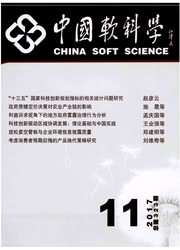

 中文摘要:
中文摘要:
本文利用农业部固定观察点大样本农户与行政村数据,对我国农村内部居民收入差距进行了测算和分解,并对其变化从市场化改革和要素流动角度进行了解释。2004-2012年,我国农村内部居民收入差距仍然呈上升趋势。其中,非农收入本身差距在经历了拉大过程后已开始呈现缩小趋势,但其在人均总收入中的比重仍在上升,因此其对人均总收入差距的贡献率虽然缓慢下降,但仍远超农业收入的贡献;农业经营收入对人均总收入差距的贡献率显著低于工资性收入,但农业经营收入自身的差距则呈上升趋势。计量经济分析表明,农村土地流转的上升在减少农户种植业收入的同时,也加大了农户在土地要素配置上的差异,拉大了农户种植业收入的差距;劳动力市场化改革明显促进农户工资性收入提升,但对农户劳动力外出就业的影响呈现先上升后下降的倒“U”型关系;资本市场的改革对农户财产性收入增长和非农经营收入增长影响显著,但扩大了财产性收入差距。
 英文摘要:
英文摘要:
In this paper, by using the mass sample of farmers and village-level data from observation points deployed by the Ministry of Agriculture, and through calculating and decomposing the income gap of rural residents, we explain the change of income gap in tems of market reform of production elements. The paper shows that the income gap of rural residents still shows an upward trend from 2004 to 2012 ,the income gap of non-agricuhuralhas shown a narrowing trend after the process of widening, but its proportion in the per capita income is continuously rising, and its contribution rate to per capita income gap is declining slowly, but much higher than the contribution rate of agriculture income. The contribution rate of agrieuhural income to per capita income gap is in a rising tendency and significantly lower than wage income. Econometric analysis shows that the rising in the transformation of the land objective significantly improves farmers farming income, while expands the differences of distribution over the land, leading to the growth of farmers' farming income gap. The reform of the labor market significantly increases the farmers' income, and however, it generates an inverted U-shaped tendency for the distribution of the migrant peasant workers. The reform of capital market will significantly increase the property income andnon-farm management income of farmers, whereas expand the gap of property income.
 同期刊论文项目
同期刊论文项目
 同项目期刊论文
同项目期刊论文
 期刊信息
期刊信息
